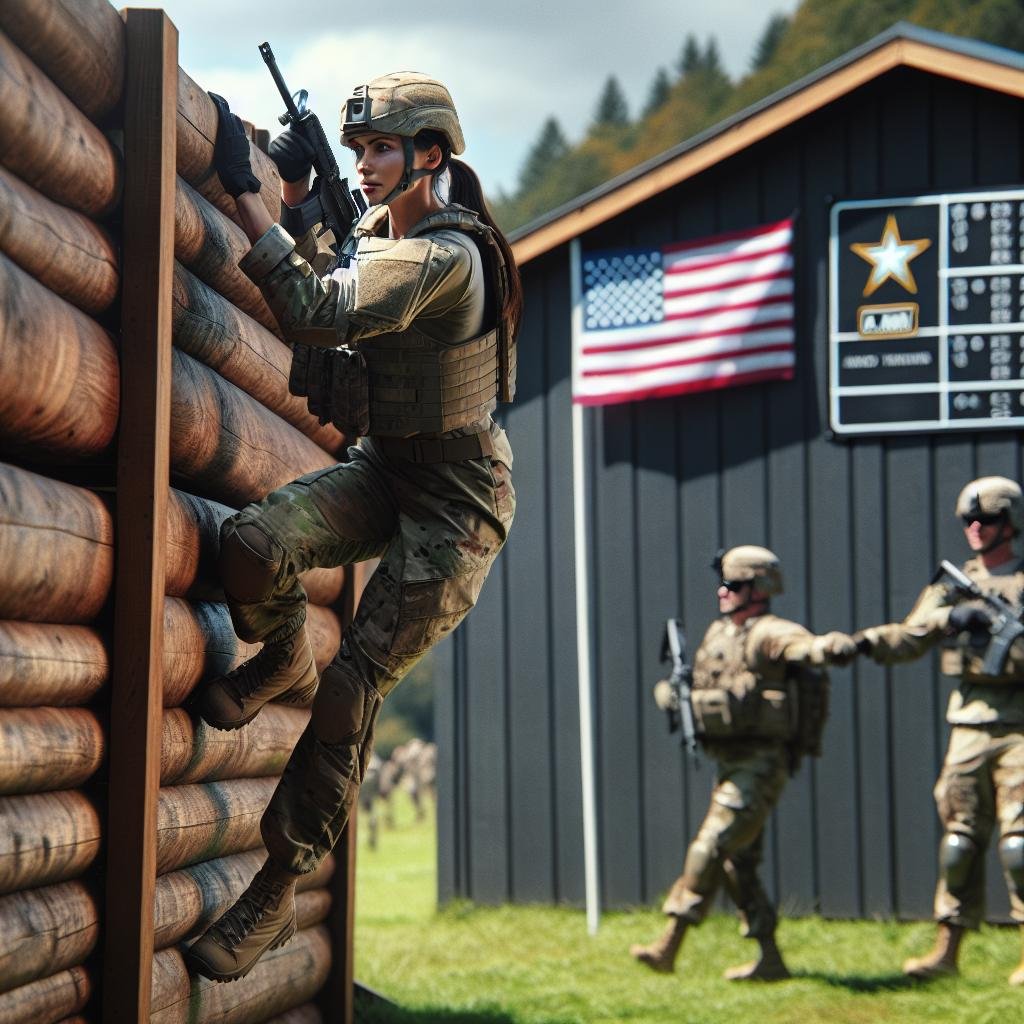
# Women in Combat: Standards, Equality & Military Readiness
Women in Combat: Military Standards & Battlefield Equality
The debate over women serving in direct combat roles has intensified in recent years as more military positions open to female service members. This contentious issue sits at the intersection of military readiness, gender equality, and physical capabilities. The discussion raises fundamental questions about fitness standards, battlefield effectiveness, and whether the integration of women into combat units represents progress or poses potential risks to military operations.
The conversation gained renewed attention following recent comments by Fox News host Pete Hegseth, who questioned whether women should serve in combat roles at all. This article examines the evidence, perspectives, and realities surrounding women in combat positions within today’s military forces.
The Evolution of Women’s Combat Roles in the Military
Women have served in the U.S. military since its founding, though their roles were historically limited. The landscape changed dramatically in 2013 when the Department of Defense lifted the ban on women serving in combat. By 2016, all military occupations and positions opened to women who could meet the gender-neutral standards required for the role.
This policy shift came after years of women already serving in combat-adjacent positions in Iraq and Afghanistan. Female soldiers frequently found themselves in combat situations despite official restrictions. Their demonstrated capabilities in these scenarios helped fuel the push for full integration.
Today, women serve across all branches of the military, including elite special operations units. Their path hasn’t been easy. The first women to complete Army Ranger School in 2015 faced both intense physical challenges and skepticism about whether standards had been lowered to accommodate them.
The Physical Standards Debate
At the heart of the women in combat controversy lies the question of physical standards. Critics argue that biological differences between men and women create insurmountable performance gaps in strength, endurance, and speed that could compromise mission effectiveness.
The military has approached this challenge by implementing gender-neutral standards based on job requirements rather than using different metrics for men and women. These standards focus on the physical abilities needed to perform specific combat tasks:
- Carrying heavy equipment over long distances
- Evacuating wounded comrades from danger
- Handling weapon systems requiring significant upper body strength
- Enduring extended periods of physical stress with minimal rest
Former Army Ranger Captain Kristen Griest, one of the first women to graduate from Ranger School, has been vocal about maintaining rigorous standards. In a 2021 article, she argued against lowering physical requirements, stating: “The entire purpose of creating gender-neutral standards was to ensure that women could only serve in combat arms if they were capable of performing the job.”
What the Research Shows
Scientific research consistently shows physiological differences between sexes. Men typically have more muscle mass, greater bone density, higher strength-to-weight ratios, and higher aerobic capacity on average. These differences translate to performance gaps in military-relevant physical tasks.
A 2015 Marine Corps study found that all-male units outperformed mixed-gender units in 69% of evaluated tasks. The mixed-gender units showed slower movement times, lower accuracy in weapons employment, and higher injury rates among female participants.
However, it’s crucial to note that these findings represent statistical averages, not individual capabilities. Many women can and do exceed the physical performance of the average male service member. The question becomes whether policies should focus on individual capabilities rather than group averages.
Beyond Physical Strength: The Full Spectrum of Combat Effectiveness
The focus on physical standards often overshadows other vital elements of combat effectiveness. Modern warfare requires diverse skills beyond raw physical strength:
- Critical thinking and decision-making under pressure
- Technical proficiency with advanced systems
- Cultural awareness and communication skills
- Team cohesion and leadership
- Psychological resilience
Women bring unique perspectives and capabilities that can enhance mission success, particularly in operations requiring engagement with local populations. In Afghanistan and Iraq, female service members proved invaluable for searching women, gathering intelligence from female civilians, and building rapport in gender-segregated societies.
Colonel Elspeth Ritchie, a retired Army psychiatrist, notes that diversity in military units often leads to better problem-solving and decision-making. “Different perspectives lead to more creative solutions,” she explains. “In complex operational environments, having both men and women contributing their viewpoints can be a strategic advantage.”
Unit Cohesion Concerns
Critics have raised concerns about how gender integration might affect unit cohesion—the bonds of trust essential for combat effectiveness. Early studies suggested potential disruptions, but more recent research and actual experience tell a different story.
A RAND Corporation study examining gender integration in ground combat units found that effective leadership and clear standards were the primary factors determining successful integration. Units with leaders who emphasized capability over gender saw minimal disruption to cohesion.
Military sociologist Dr. Robert MacCoun observes: “When people work together toward common goals under challenging conditions, bonds form based on demonstrated competence rather than demographic characteristics. What initially seems disruptive often becomes the new normal surprisingly quickly.”
The Reality of Women in Combat Roles Today
While policy changes have opened all combat positions to women, the numbers remain relatively small. As of 2023, women comprise approximately:
- 2% of infantry Marines
- 5% of Army combat arms positions
- Less than 1% of special operations forces
These numbers reflect both the rigorous standards and the cultural barriers that persist. Many qualified women choose not to pursue combat roles due to concerns about acceptance, career advancement, or personal preferences.
Those who do enter these fields often report mixed experiences. Many describe earning respect through demonstrated competence, while others encounter lingering skepticism regardless of their performance. Nearly all emphasize the importance of being held to the same standards as their male counterparts.
Frontline Experiences
Captain Jennifer Moreno, an Army nurse killed while serving with special operations forces in Afghanistan, exemplifies the contribution women make in combat settings. Moreno volunteered for a cultural support team that accompanied Rangers on high-risk missions, providing critical assistance when interacting with Afghan women. Her sacrifice highlights both the capabilities and commitment of women in combat environments.
Former Marine Corps officer Kate Germano points out that focusing solely on whether women can meet physical standards misses the broader picture: “The question shouldn’t be if women belong in combat, but rather how we can best utilize everyone’s strengths to create the most effective fighting force.”
International Perspectives on Women in Combat
The United States isn’t alone in grappling with this issue. Several nations have extensive experience with women in combat roles:
- Israel: Has employed women in certain combat positions for decades, though restrictions remain for some units
- Norway: Implemented gender-neutral conscription and fully integrated combat units
- Australia: Opened all combat roles to women in 2013
- Canada: Has allowed women in all military roles, including combat, since 1989
The Norwegian Armed Forces have been particularly successful with integration. Their approach emphasizes physical standards based on job requirements while actively working to remove cultural barriers. The result has been increased operational effectiveness and improved recruitment of high-quality candidates regardless of gender.
Colonel Ingrid Gjerde, who commanded Norwegian forces in Afghanistan, noted: “What matters in combat is competence, not gender. Our experience shows that mixed teams often perform better because they bring different perspectives to problem-solving.”
The Path Forward: Balancing Readiness and Opportunity
The debate about women in combat often becomes polarized between those who see it as a social experiment that compromises readiness and those who view exclusion as discrimination. A more nuanced approach recognizes both legitimate readiness concerns and the potential benefits of qualified women serving in combat roles.
Military leaders generally agree on several key principles:
- Standards must be based on operational requirements, not arbitrary metrics
- Individual capability, not gender, should determine eligibility
- Leadership is critical for successful integration
- Ongoing assessment is necessary to ensure combat effectiveness
General David Berger, former Commandant of the Marine Corps, summarized this approach: “Our standards remain high—not to keep people out, but because the battlefield demands it. Anyone who meets those standards deserves the opportunity to serve where they can make the greatest contribution.”
Addressing Valid Concerns
Some concerns about women in combat deserve serious consideration. Higher injury rates among female service members present a legitimate readiness issue. Research shows women experience stress fractures and musculoskeletal injuries at roughly twice the rate of men during similar training.
Military physiologist Dr. Bradley Nindl explains: “These differences don’t mean women can’t serve effectively in combat roles, but they do require attention to injury prevention, conditioning programs, and equipment design to maintain readiness.”
Other practical challenges include field hygiene, privacy considerations, and pregnancy planning in deployable units. These issues require thoughtful policies rather than exclusion, as other nations with integrated forces have demonstrated.
Conclusion: Capability, Not Gender, Should Determine Combat Roles
The evidence suggests that the most effective approach to women in combat roles focuses on individual capabilities rather than gender-based policies. This approach maintains military readiness while providing equal opportunity based on merit.
The successful integration of women into combat units requires:
- Maintaining rigorous, job-specific standards
- Addressing legitimate physiological and operational challenges
- Providing effective leadership that focuses on performance
- Recognizing the full spectrum of skills needed for modern warfare
- Continuing to evaluate outcomes based on objective measures
As former Defense Secretary Ash Carter stated when announcing the full opening of combat roles to women: “Our force of the future must continue to benefit from the best people America has to offer… in the 21st century, that includes drawing strength from the broadest possible pool of talent.”
The debate about women in combat will likely continue, but the focus should remain on creating the most effective fighting force possible—one that utilizes the talents of all qualified service members regardless of gender. The battlefield doesn’t care about demographics; it rewards competence, courage, and commitment—qualities that know no gender.
References
- Department of Defense: “Carter Opens All Military Occupations, Positions to Women”
- Modern War Institute: “With Equal Opportunity Comes Equal Responsibility”
- RAND Corporation: “Considerations for Integrating Women into Closed Occupations in U.S. Special Operations Forces”
- Brookings Institution: “Women in Combat: Five-Year Status Update”
- Military.com: “Marine Infantry Officer Course Statistics”
